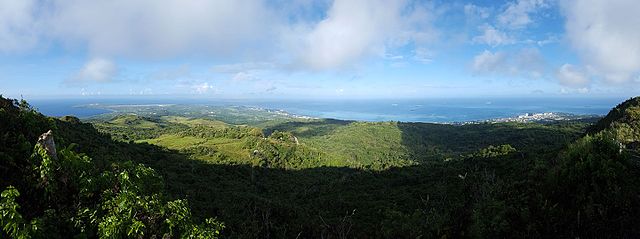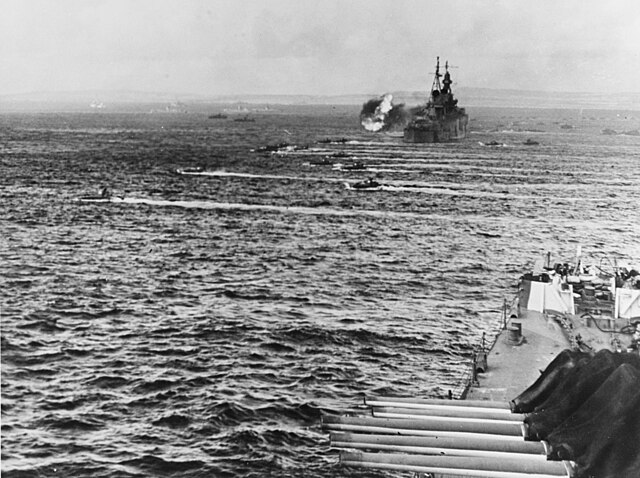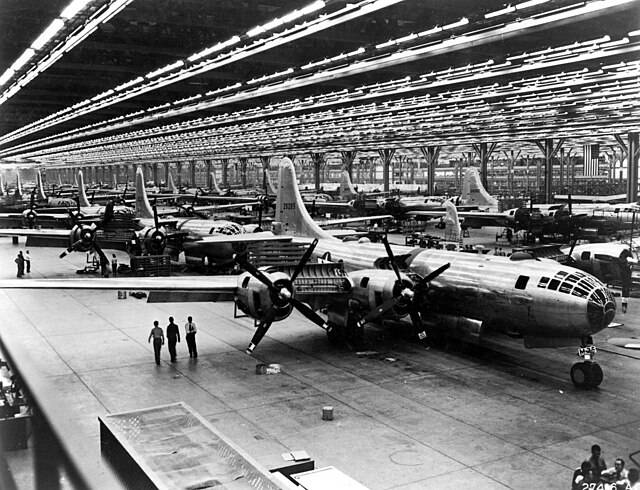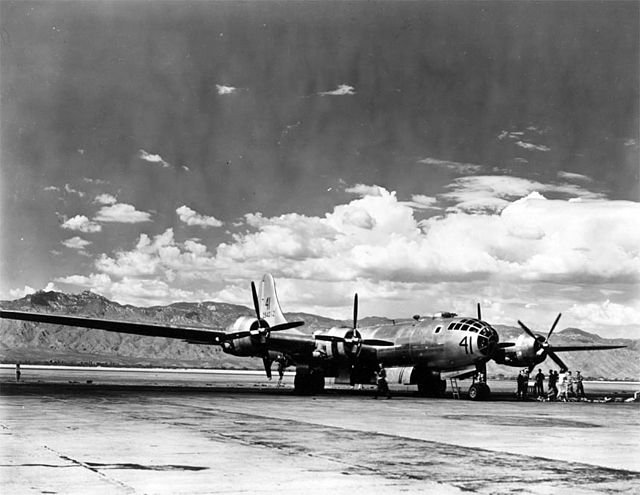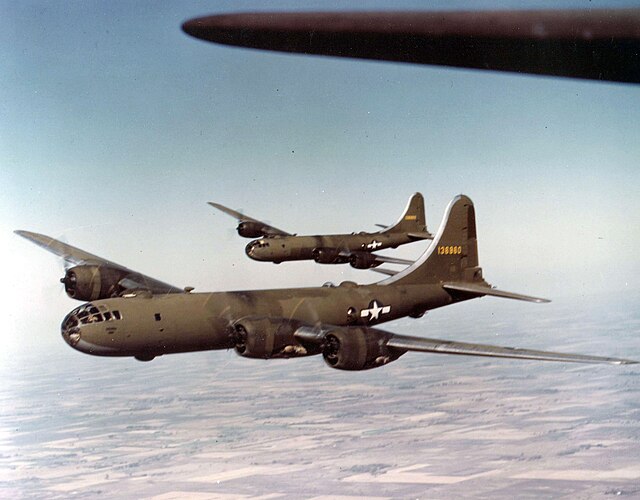The Battle of Saipan was an amphibious assault launched by the United States against the Empire of Japan during the Pacific campaign of World War II between 15 June and 9 July 1944.
The battle resulted in the American occupation of the island, putting the Japanese home islands within the range of United States Army Air Forces B-29 bombers and precipitating the resignation of Prime Minister of Japan Hideki Tōjō. It also triggered the Battle of the Philippine Sea, which effectively destroyed Japanese carrier-based airpower.
Marines take cover behind an M4 Sherman tank while clearing Japanese forces in northern Saipan, 8 July 1944.
Panorama from Mount Tapotchau looking southwest, 2017: Aslito Field is on the left, Charan Kanoa and invasion beaches are left of center, and Garapan is on the right
LVTs heading for shore on 15 June. Birmingham in foreground; the cruiser firing in the distance is Indianapolis
Japanese 6-inch (152 mm) coastal defense gun found on Saipan after the battle
Boeing B-29 Superfortress
The Boeing B-29 Superfortress is an American four-engined propeller-driven heavy bomber, designed by Boeing and flown primarily by the United States during World War II and the Korean War. Named in allusion to its predecessor, the B-17 Flying Fortress, the Superfortress was designed for high-altitude strategic bombing, but also excelled in low-altitude night incendiary bombing, and in dropping naval mines to blockade Japan. B-29s dropped the atomic bombs on Hiroshima and Nagasaki, the only aircraft ever to drop nuclear weapons in combat.
Boeing B-29 Superfortress
Boeing assembly line at Wichita, Kansas (1944)
The length of the 141-foot (43 m) wing span of a Boeing B-29 Superfortress based at Davis-Monthan Field is vividly illustrated here with the cloud-topped Santa Catalina Mountains as a contrasting background.
YB-29 Superfortresses in flight


